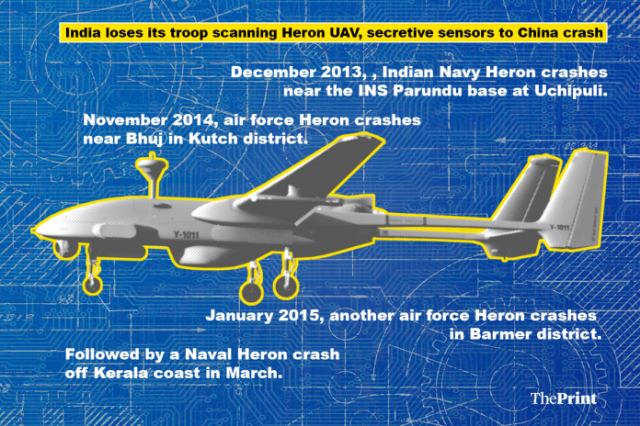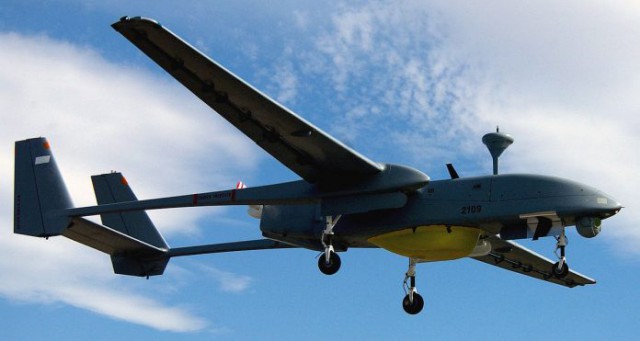India has lost a valuable troop scanning unmanned aerial vehicle (UAV), along with its payload of sensors and intelligence systems, to a cross-border crash in Tibet, raising concerns that the wreckage may reveal some well-kept secrets to the Chinese Army.
The Heron UAV of the Indian Army, deployed to keep an eye on Chinese troop movements along the sensitive Sikkim border that saw a confrontation at Doklam earlier this year, was lost after a technical problem in which it lost contact with ground control. The incident has evoked a surprisingly strong reaction from China.
While the loss of a good reconnaissance asset is a hit for the Indian armed forces, the payload the Heron carries could be a valuable recovery for Chinese forces that are denied access to all western defence technologies. The Heron fleet has been hit with a consistent `one loss a year’ crash rate since 2013.
Sensitive Israeli origin technologies for gathering optical data in all-weather conditions, sensors designed to pick up troops and vehicular presence and airborne radars to track distant movements were on board the lost UAV.
Though it is regularly operated both on the Pakistani and Chinese borders, this is the first time that India has lost a Heron to a cross-border crash. The Heron has been recovered by Chinese troops but no information is currently available on the condition of the wreckage and the senor payload that would be in excess of 250 kg.
The Army in an official statement said that the Chinese side was informed after the UAV drifted across the Sikkim border. China has said that it is “strongly dissatisfied with and opposed” to the incident, saying India infringed on its territorial sovereignty.
“An Indian UAV which was on a regular training mission inside the Indian territory lost contact with the ground control due to some technical problem and crossed over the LAC in the Sikkim Sector. As per standard protocol, the Indian border security personnel immediately alerted their Chinese counterparts to locate the UAV. In response, the Chinese side reverted with the location details of the UAV,” an Army spokesperson said.
Of late, the Indian Heron fleet – first of which was acquired in 2000 after recommendations of the Kargil review committee – has seen a series of crashes, all of which have occurred within Indian territory. The crash rate has remained at a steady ‘one loss’ a year. The UAVs are deployed with the Air Force, Army and Navy.
The unusual crash rate started in December 2013, with an Indian Navy Heron crashing near the INS Parundu base at Uchipuli. In November 2014, an Air Force Heron crashed near Bhuj in Kutch district. In January 2015, another air force Heron crashed in Barmer district, followed by a Naval Heron crash off Kerala coast in March.
Source: The Print


